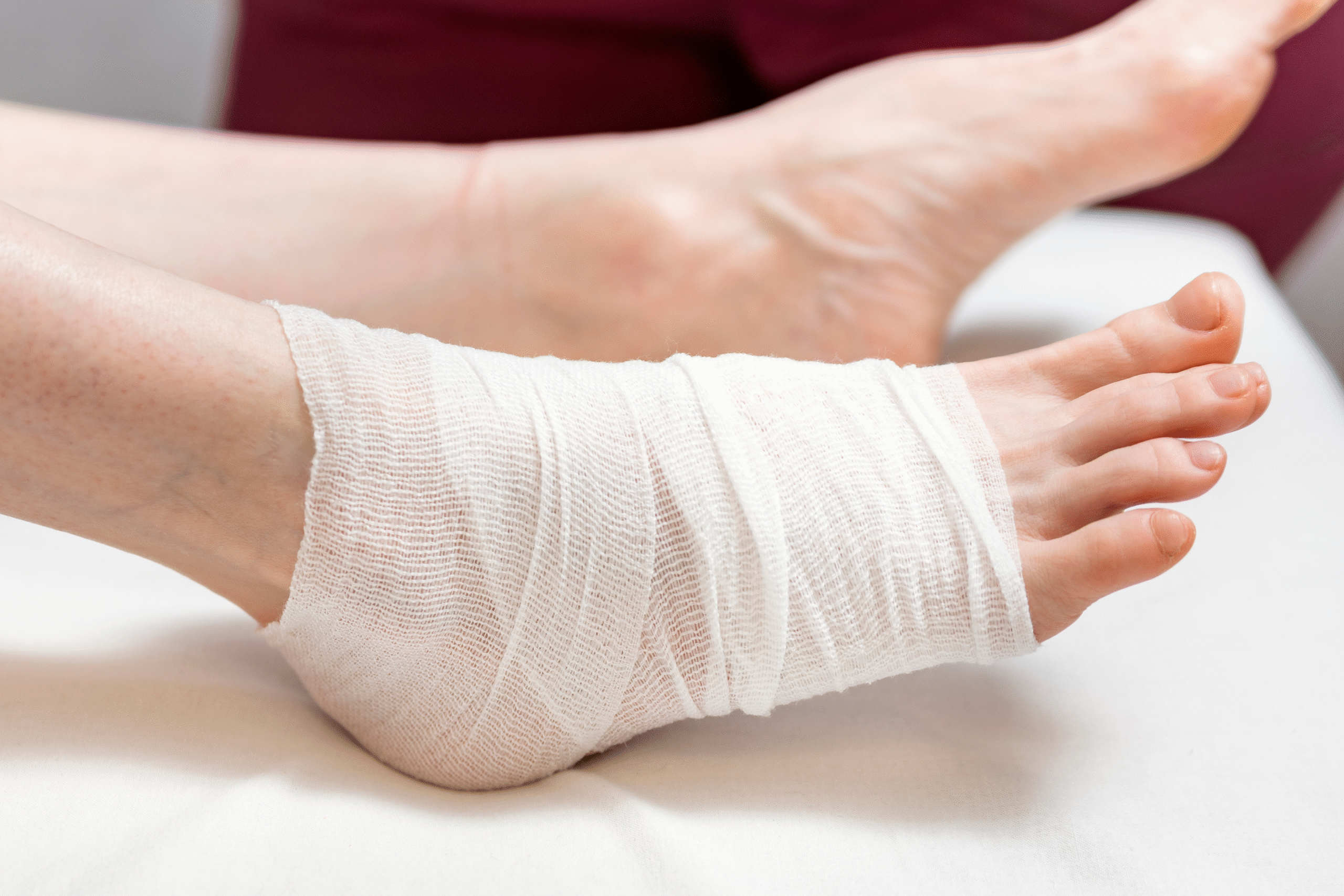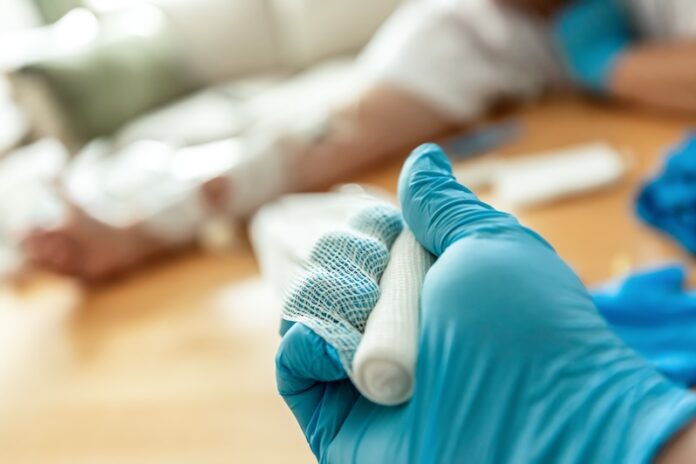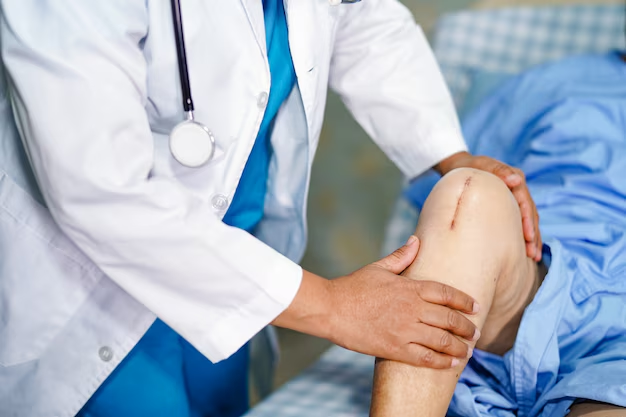What Are Bed Sores and Why Do They Develop?
Bed sores, also called pressure ulcers, are injuries to the skin and underlying tissue that usually develop when someone spends long periods in one position without moving. They occur most often in people who are bedridden, use a wheelchair, or have limited mobility. These sores are caused by prolonged pressure on the skin, especially over bony areas like the heels, hips, back, and buttocks. When blood circulation is restricted for too long, tissues start to break down, leading to painful wounds. Other contributing factors include friction from movement, moisture on the skin, and poor nutrition. Individuals with chronic illnesses or weakened immune systems are also at higher risk. Understanding how bed sores form is the first step in providing effective care and reducing the chance of complications.
Stages of Bed Sores and Their Symptoms
Bed sores progress through several stages, and identifying them early is critical for effective bed sore treatment. Stage 1 sores appear as persistent redness on the skin that does not fade after pressure is relieved. The skin may feel warmer or firmer than surrounding areas and may cause discomfort. Stage 2 involves partial skin loss, often appearing as a blister or shallow open wound. Stage 3 progresses deeper into the tissue, creating a crater-like sore that exposes fat layers and carries a higher risk of infection. Stage 4 is the most severe, involving extensive tissue damage, visible muscle or bone, and a high likelihood of serious infection. Each stage requires different levels of care, and delaying treatment can lead to long-term health challenges. Recognizing the warning signs at each stage helps caregivers act quickly and prevent worsening conditions.
Medical Approaches for Bed Sore Treatment
Medical treatment is often necessary for moderate to severe bed sores, and healthcare professionals play a vital role in developing a personalized care plan. One of the most common approaches is wound cleaning, which removes bacteria and debris to promote healing. Debridement, or the removal of dead tissue, is another essential step that prevents infection and helps new tissue grow. Doctors may recommend specialized dressings that maintain a moist environment while protecting the wound from further damage. Antibiotics are often prescribed when signs of infection are present, such as pus, swelling, or fever. In some cases, advanced wound care products like hydrocolloid or foam dressings are used for deeper sores. Surgical interventions may also be required in severe situations where tissue repair is necessary. Regular check-ups with wound care specialists ensure proper monitoring and adjustment of treatment strategies.
At-Home Care Methods to Support Healing
For many caregivers, providing bed sore treatment at home is a major responsibility, and with proper guidance, it can be highly effective. The most important step is keeping the wound clean and properly dressed to reduce the risk of infection. Caregivers should gently wash the affected area with mild soap and water or a recommended saline solution before applying fresh dressings. Repositioning the patient every two hours is vital to relieve pressure on vulnerable areas and encourage circulation. Maintaining good nutrition is also critical, as protein, vitamins, and minerals help repair damaged skin and tissues. Hydration supports healing by keeping the skin supple and resilient. Special cushions, pads, or air mattresses can be used to reduce pressure and distribute weight more evenly. These at-home care techniques not only support healing but also improve overall comfort for patients.
- Tips for caregivers at home include:
- Repositioning patients regularly
- Keeping skin dry and moisturized
- Monitoring wounds daily for changes
- Using pressure-relieving cushions or mattresses
- Ensuring a balanced diet rich in protein and vitamins
Prevention Strategies to Reduce Bed Sore Risks
Preventing bed sores is often easier than treating them, making proactive care a top priority for caregivers and patients. Daily skin inspections are essential for spotting early signs of irritation or redness before they develop into open wounds. Patients should be encouraged to move or be repositioned frequently, ideally every one to two hours, to reduce prolonged pressure. Pressure-relieving devices such as specialized mattresses, wheelchair cushions, and padded supports can make a significant difference in lowering risks. Maintaining proper hygiene is another key factor, as keeping the skin clean and dry reduces the chance of infections. Moisturizing the skin helps protect it from dryness and cracking, while promptly treating minor cuts or abrasions prevents complications. A healthy diet that includes proteins, vitamins, and minerals supports stronger, more resilient skin. Prevention strategies not only lower medical risks but also enhance quality of life for patients.
When to Seek Professional Help
Knowing when to seek medical help is crucial for effective bed sore treatment. While mild sores may be managed at home, advanced stages often require professional intervention. Caregivers should be alert for warning signs such as increased pain, swelling, foul odor, or pus, as these indicate infection. Fever or spreading redness are additional signals that medical attention is urgently needed. Doctors and wound care specialists can provide advanced treatments like debridement, surgical repair, or targeted therapies that are not possible at home. Hospitalization may be necessary in severe cases to ensure proper monitoring and prevent life-threatening complications. Specialized wound clinics also offer access to advanced equipment and therapies that promote faster healing. Seeking professional help at the right time can make the difference between recovery and long-term health challenges.
Lifestyle Adjustments for Long-Term Care
Long-term care for individuals at risk of bed sores requires consistent attention and adjustments to daily routines. Creating a safe home environment with supportive equipment such as pressure-relieving mattresses, hospital beds, or mobility aids helps reduce risks. Encouraging gentle exercises, even simple range-of-motion activities, can improve circulation and maintain skin health. Caregiver education is another important factor, as informed caregivers are better prepared to spot early warning signs and provide effective treatment. Emotional well-being should not be overlooked, since patients dealing with chronic wounds may experience stress or depression. Support networks, whether through healthcare providers or community groups, can offer valuable guidance and encouragement. Proper planning for mobility, skin care, and nutrition ensures that long-term care is both practical and sustainable. These lifestyle adjustments not only help prevent recurrence but also improve the patient’s overall quality of life.
Common Myths About Bed Sore Treatment
Misconceptions about bed sore treatment often lead to ineffective care or delayed healing. One common myth is that bed sores only affect elderly individuals, but they can develop in people of all ages with limited mobility. Another misconception is that home remedies, such as applying household creams or oils, are sufficient for treatment. In reality, these methods may worsen the wound and delay healing. Some people believe bed sores are a natural part of aging and cannot be prevented, which is entirely false. Ignoring early warning signs is another dangerous myth, as minor redness can quickly develop into a severe wound if left untreated. Others mistakenly assume that once a sore heals, it will not return, but without preventive care, the risk of recurrence remains high. Dispelling these myths helps caregivers and patients focus on proven strategies for healing and prevention.
Frequently Asked Questions (FAQ)
1. How long does it take for a bed sore to heal?
Healing time depends on the severity of the sore. Stage 1 sores may heal within a few days with proper care, while stage 3 or 4 sores may take weeks or even months.
2. Can bed sores be completely cured at home?
Mild sores can often be treated effectively at home with good wound care, nutrition, and repositioning. Severe sores, however, usually require professional medical treatment.
3. What are the best dressings for bed sore treatment?
Hydrocolloid, foam, and alginate dressings are commonly recommended, depending on the stage of the sore. A healthcare provider can determine the most suitable option.
4. Are elderly patients more prone to bed sores?
Yes, older adults have thinner skin and often face mobility challenges, making them more susceptible to bed sores. Proper preventive care is especially important in this group.
5. How can caregivers prevent bed sores in bedridden patients?
Regular repositioning, good nutrition, daily skin checks, and the use of pressure-relieving devices are key prevention strategies.
Takeaway
Bed sore treatment requires a combination of medical care, at-home support, and long-term preventive strategies. Caregivers and healthcare professionals must work together to provide consistent monitoring, wound care, and lifestyle adjustments that support healing. Recognizing early warning signs and taking action quickly can prevent complications and promote faster recovery. Preventive care such as repositioning, proper nutrition, and specialized equipment is just as important as treatment itself. Dispelling myths and staying informed ensures that patients receive the best possible care. With compassion, knowledge, and the right resources, both patients and caregivers can face the challenges of bed sores with greater confidence and hope.






